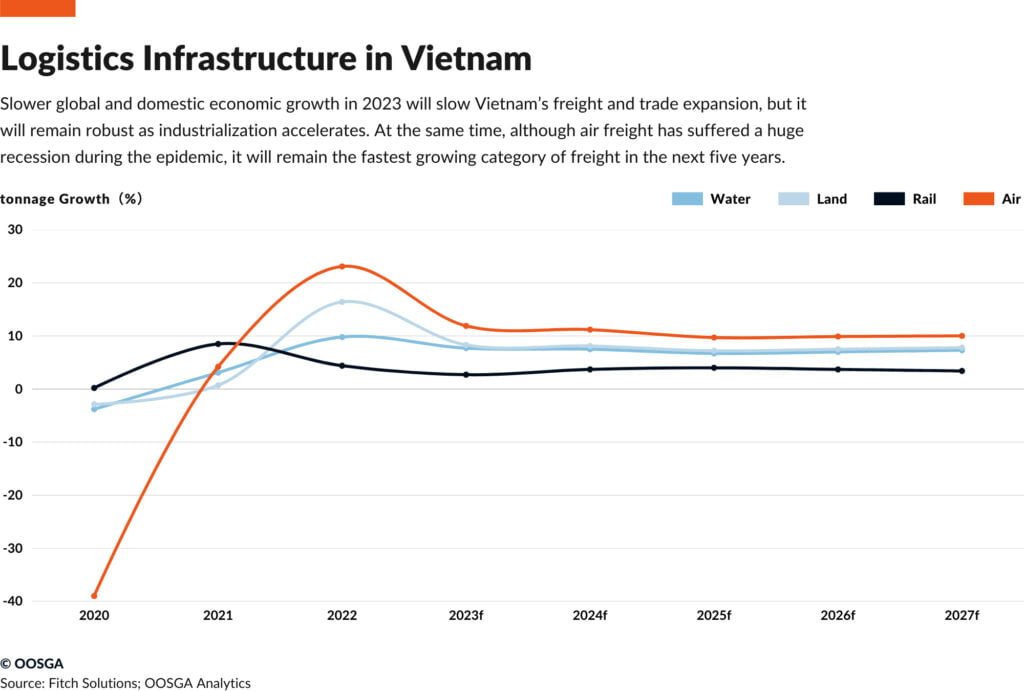Vietnam is on the rise. Known for its dynamic economy and ambitious goals, the country is now a leader in infrastructure development in Southeast Asia. Vietnam spends 6% of its GDP on infrastructure, which is significantly higher than the regional average of 2.3%. This Infrastructure Development Vietnam commitment reflects the government’s determination to modernize and expand the nation’s critical infrastructure, setting the stage for long-term economic growth.
Massive Investments in Transportation

A major portion of Vietnam’s infrastructure spending goes into transportation. The country’s public and private investment in infrastructure has reached 5.7% of its GDP, placing it at the top in Southeast Asia and second in Asia after China. Vietnam’s ambitious plans include upgrading and building new roads, airports, seaports, and railway lines. The Vietnamese government has recently approved an infrastructure master plan to spend between $43-65 billion from 2021 to 2030. The plan focuses on roads, railways, and waterways.
Private Sector Participation and PPP Law
Recognizing the need for sustainable financing, the Vietnamese government has shifted its focus towards private sector participation. A significant move in this direction is the introduction of a new Public-Private Partnership (PPP) Law, which took effect in March 2021. This law aims to encourage private investments, particularly in the transportation, power grid, and power plant sectors, reducing the reliance on public funds and national debt. By enabling more private investment, Vietnam hopes to accelerate infrastructure development. It can also create opportunities for investors, boosting the country’s overall economic resilience.
Expansion of Seaport Infrastructure
Vietnam’s strategic location makes it a critical gateway for trade in Southeast Asia, and the government is capitalizing on this advantage. As part of the 2021-2030 master plan, nearly $13.8 billion is earmarked for expanding the country’s seaport system. This investment will significantly increase the capacity of Vietnamese ports, allowing them to handle up to 1.4 billion tons of cargo. Such enhancements are expected to streamline logistics, reduce costs, and attract more international trade, positioning Vietnam as a key player in global supply chains.
Innovative and Sustainable Transportation
Vietnam’s commitment to modernizing its infrastructure also includes innovative and sustainable projects. High-speed railway lines are under construction, including the North-South line and the Ho Chi Minh City-Can Tho line, which will connect major cities with faster, more efficient transportation. Moreover, the country is promoting clean transportation technologies and developing public transportation systems in urban areas, aligning with global sustainability trends.
Impact on Economic Growth and the Construction Industry

The infrastructure boom in Vietnam is creating a ripple effect across various sectors. As these massive projects unfold, the demand for construction materials, skilled labor, and related services is on the rise, driving growth in the construction industry. This surge not only creates jobs but also boosts economic activity, making Vietnam an attractive destination for both local and foreign investors. With continued investments, Vietnam is on a clear path toward becoming a major economic hub in Asia, supported by world-class infrastructure that meets the needs of a fast-growing economy.
The significant investment in Infrastructure Development Vietnam is transforming the country’s economic landscape. With ambitious plans, a shift towards private sector participation, and strategic development of transport and seaport systems, Vietnam is positioning itself as a leader in Southeast Asia. These efforts are not just about building roads and ports; they are about building the future. The ongoing infrastructure projects are solidifying Vietnam’s position as a top destination for investment in the region.

